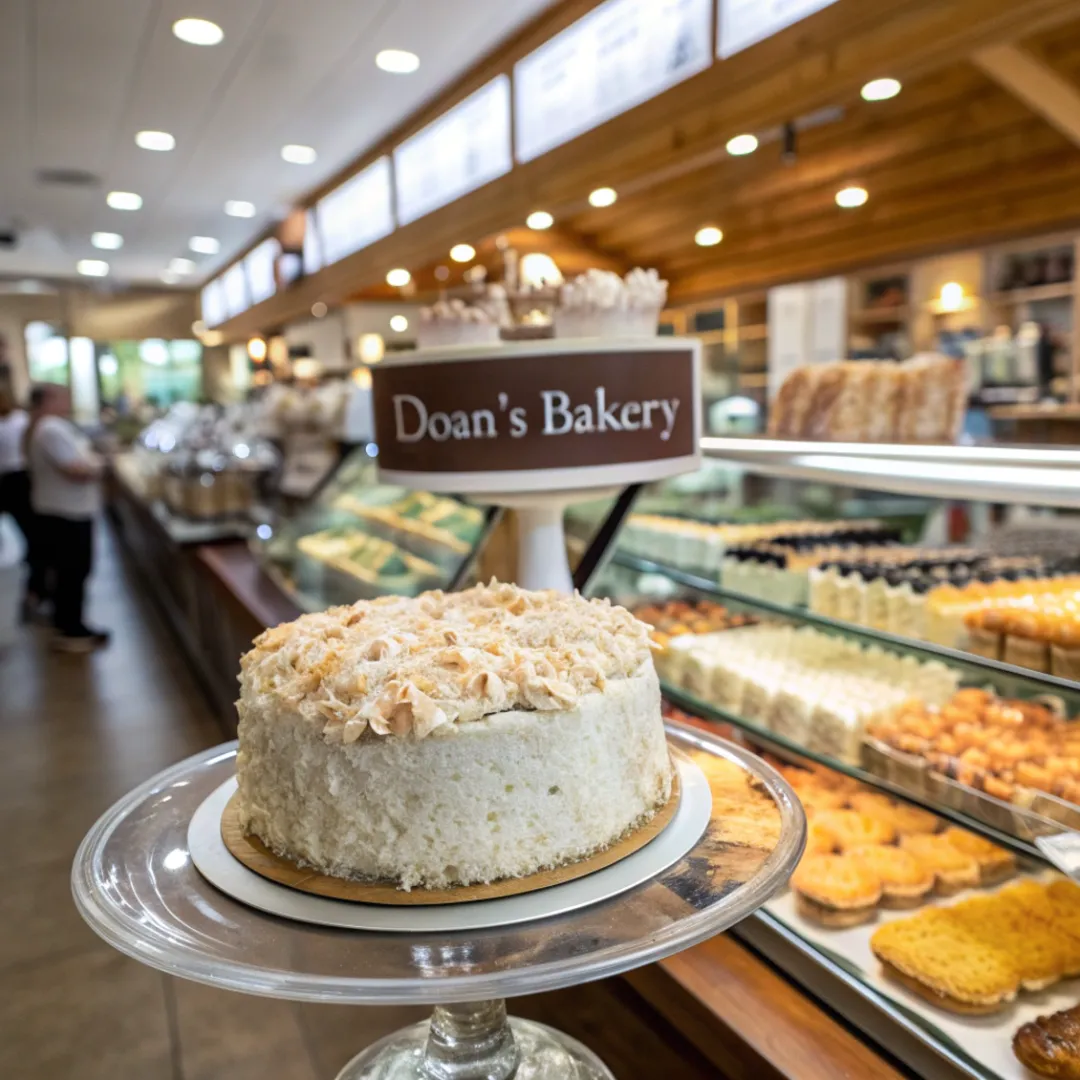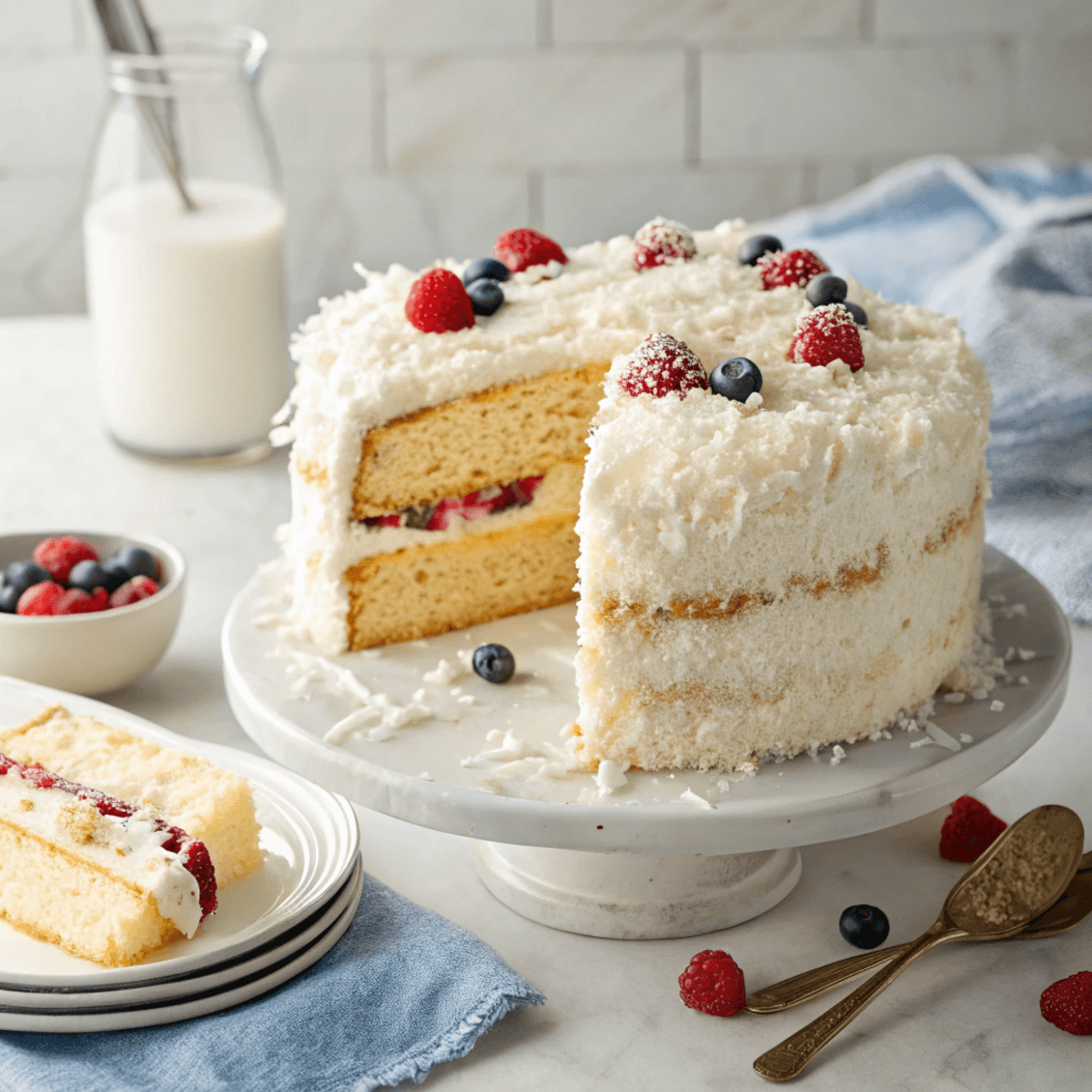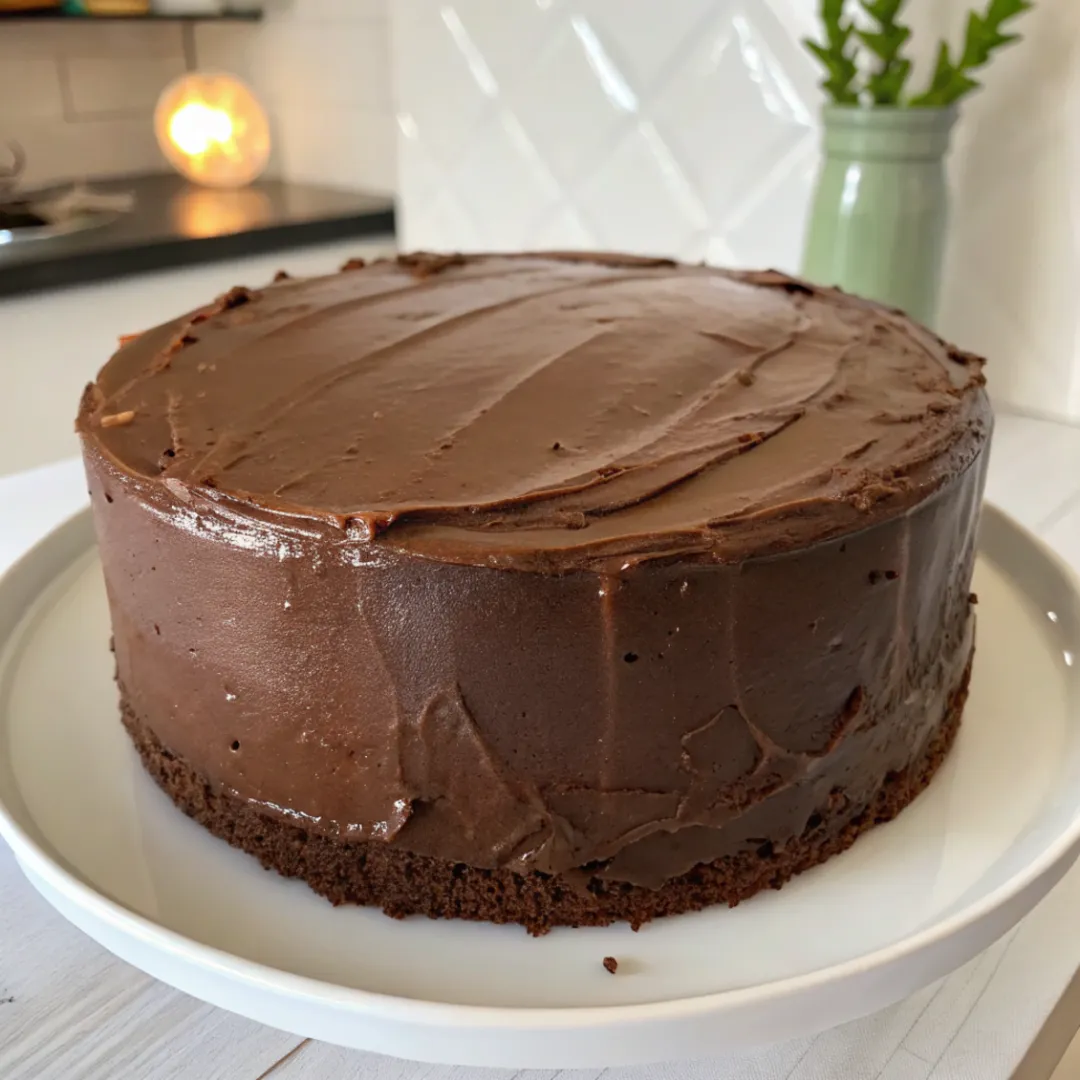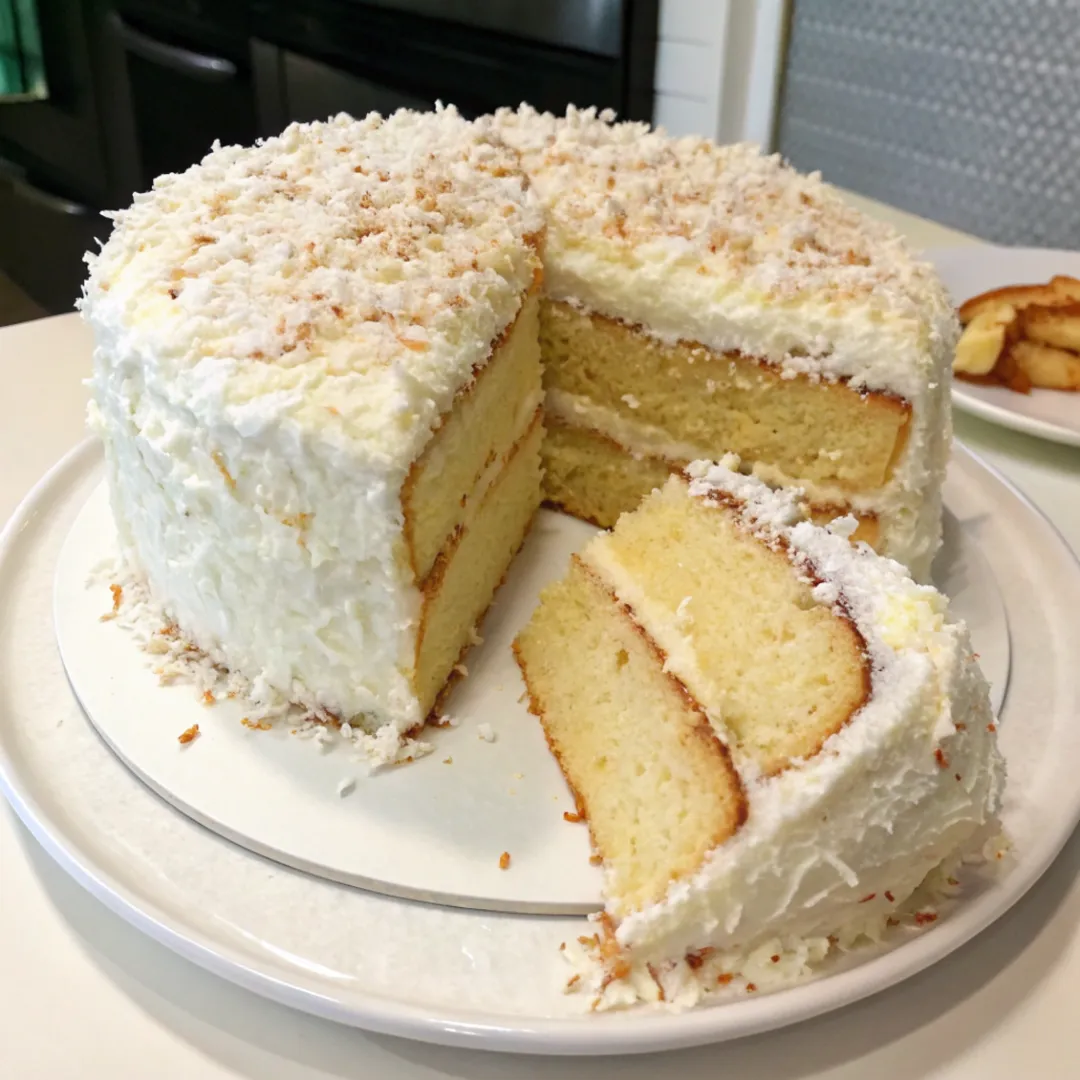
Coconut Cake Recipe – The Ultimate Guide to a Tropical Delight
🍰 Introduction to Coconut Cake Recipe
Ever dreamt of biting into a soft, fluffy, tropical cloud? That’s exactly what a coconut cake recipe delivers! 🌴 With its delicate crumb, sweet coconut flavor, and luscious frosting, this beloved dessert has taken over bakeries and kitchens worldwide. Whether you’re prepping for a birthday, a cozy family dinner, or just satisfying your sweet tooth on a Sunday, a homemade coconut cake is always a winner.
The coconut cake recipe is more than just cake—it’s a whole experience. With just the right balance of moistness and fluff, a coconut cake can instantly transport you to a tropical paradise. The creamy richness of coconut milk, the subtle crunch of shredded coconut, and the airy texture of freshly whipped frosting create a symphony of textures and tastes.
In this ultimate guide, you’ll learn everything from the perfect ingredients, step-by-step instructions, decorating ideas, variations, and expert tips to avoid common mistakes. If you’ve never baked before—don’t worry! This coconut cake recipe is beginner-friendly yet sophisticated enough for experienced bakers to impress.
So grab your apron and let’s dive into the most delicious, foolproof coconut cake recipe ever made. Ready to bake your way to paradise? 🌺🍰
🧁 Key Ingredients for the Perfect Coconut Cake Recipe
🥥 Fresh vs. Shredded Coconut – What Works Best in Coconut Cake Recipe?
When you’re crafting the perfect coconut cake recipe, the coconut you use is more important than you think. Coconut comes in many forms—fresh, shredded, desiccated, sweetened, unsweetened, toasted—and each one changes the flavor, texture, and even the moisture content of your cake. So which one should you choose?
Fresh Coconut offers the most intense flavor and aroma. It gives your cake that straight-from-the-island taste. However, cracking and shredding a fresh coconut can be a bit of a hassle, especially if you’re short on time.
Shredded Coconut, particularly the sweetened variety, is what most home bakers use in a coconut cake recipe. It’s easy to find, user-friendly, and adds sweetness and chewiness. Unsweetened shredded coconut, on the other hand, offers more control over your cake’s sugar level.
Want a middle ground? Toasted Coconut adds a nutty crunch and makes for an incredible garnish. Sprinkle it on top of your frosting for that Instagram-worthy finish! 📸✨
For most coconut cake recipes, a mix of coconut types gives the best of all worlds. Try shredded coconut in the batter, coconut milk in the mix, and toasted coconut on top. Boom—textural heaven! 🤤
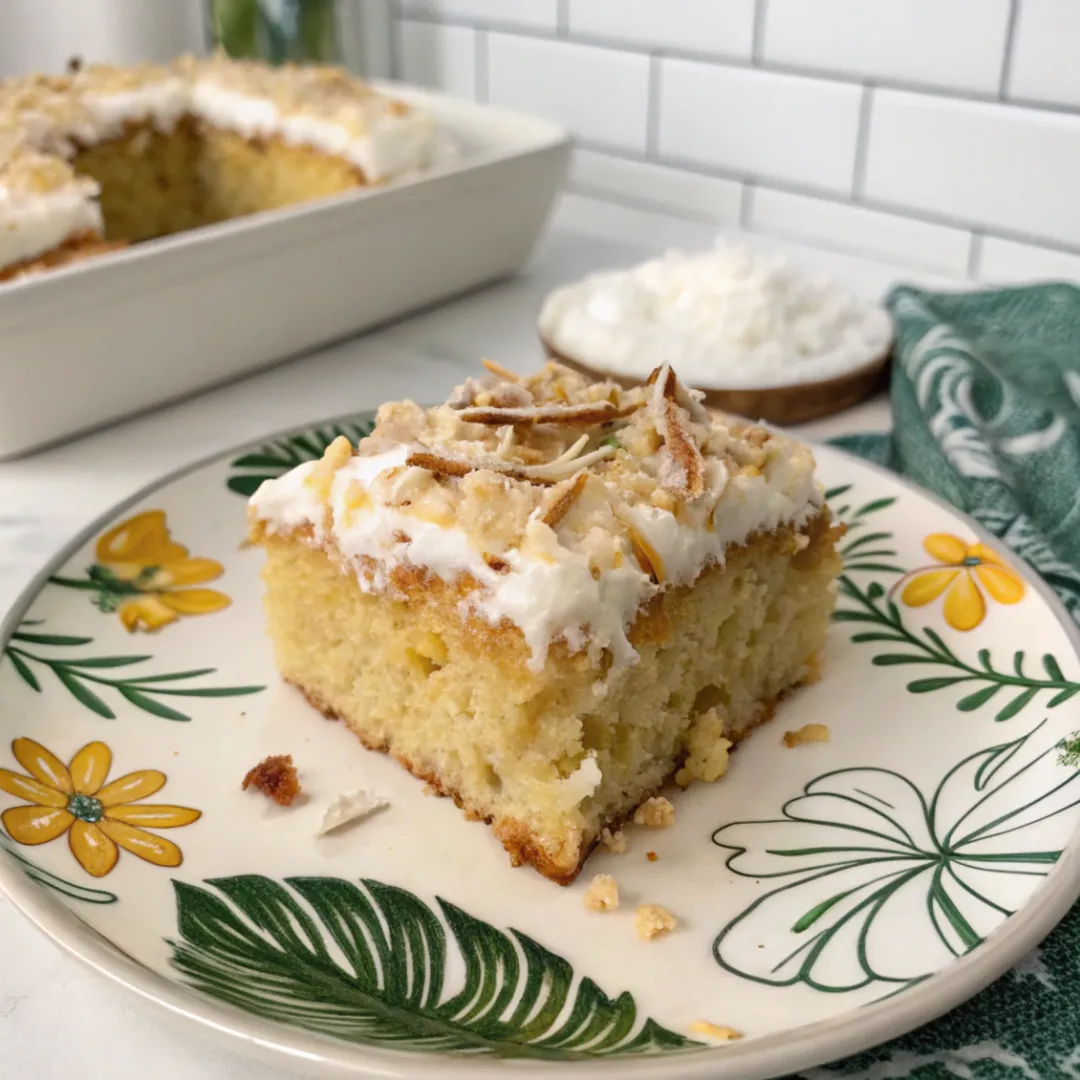
🥛 Coconut Milk and Coconut Extract – The Secret Weapons of Coconut Cake Recipe
Here’s where the real magic happens in any coconut cake recipe. Coconut milk and coconut extract infuse your cake with that rich, creamy, unmistakably tropical taste that plain milk just can’t match.
Coconut Milk, especially the canned full-fat version, adds moistness and a velvety texture to your cake layers. It replaces traditional dairy while enhancing the coconut flavor. Always shake your can before using and avoid the watery light versions unless the recipe specifically calls for it.
Coconut Extract is your secret flavor bomb. Just a teaspoon can elevate your cake from good to whoa, did you make this from scratch?! This extract is particularly helpful if you’re not using fresh coconut, as it deepens the flavor profile significantly.
Pro Tip: Combine coconut extract with a hint of vanilla or almond extract for a more complex flavor in your coconut cake recipe. It’s like layering perfumes—each one enhances the other.
Add these ingredients carefully to your batter, and you’re on your way to a super-moist, super-coconutty cake. Trust me, your guests will be begging for seconds! 🥥🍴
🍳 Choosing the Right Flour, Sugar, and Eggs for Your Coconut Cake Recipe
Now let’s talk fundamentals—flour, sugar, and eggs. They might seem basic, but the type and quality of these ingredients can make or break your coconut cake recipe.
Flour: Stick to cake flour if you want that light, fluffy texture. It has lower protein content than all-purpose flour, which means a softer crumb—perfect for coconut cake.
Sugar: Use fine granulated white sugar for a clean, sweet flavor that lets the coconut shine. Want a deeper flavor? Try a hint of brown sugar or coconut sugar.
Eggs: Large, room-temperature eggs are essential for structure and richness. They help emulsify the batter, ensuring a smooth and airy result.
One more game-changing tip? Separate your eggs and whip the whites before folding them into your batter. This adds an extra level of fluffiness that will make your coconut cake recipe taste like a dream. ☁️
These simple tweaks and high-quality ingredients make all the difference. Don’t underestimate them!
🧁 Tools and Equipment You’ll Need for the Perfect Coconut Cake Recipe
🛠️ Must-Have Baking Tools for Coconut Cake Recipe Success
You can’t bake a top-tier coconut cake recipe without the right tools! While a stand mixer might be the gold standard, even hand mixers and basic bowls can get the job done if you know how to use them right.
Here are the essentials:
Mixing Bowls (at least two): One for wet, one for dry.
Measuring Cups & Spoons: Accuracy is everything in baking.
Electric Mixer: For whipping up that perfect batter.
Cake Pans (8-inch or 9-inch): Preferably aluminum for even baking.
Cooling Racks: To let your cake breathe and avoid soggy bottoms.
Offset Spatula: For smooth frosting application.
Parchment Paper: Keeps your layers from sticking.
These tools not only streamline the baking process but also help produce consistent results every single time. Don’t cut corners here—invest in these, and your coconut cake recipe game will level up. 💪🎂
🔧 Optional Tools That Make Your Coconut Cake Recipe Even Easier
Okay, you’ve got the basics down—but if you’re a baking nerd like me, these optional tools will make you feel like a pro:
Cake Leveler: For slicing even layers.
Turntable Cake Stand: Makes frosting a breeze.
Digital Scale: Because weighing ingredients = accuracy.
Sifter: Ensures no lumps in your dry mix.
Piping Bags & Tips: For pretty frosting designs.
While not absolutely necessary, these tools can take your coconut cake recipe from good to showstopper. You don’t need to be a pastry chef to make a cake that looks (and tastes) like it came from a bakery. 🌟🍰
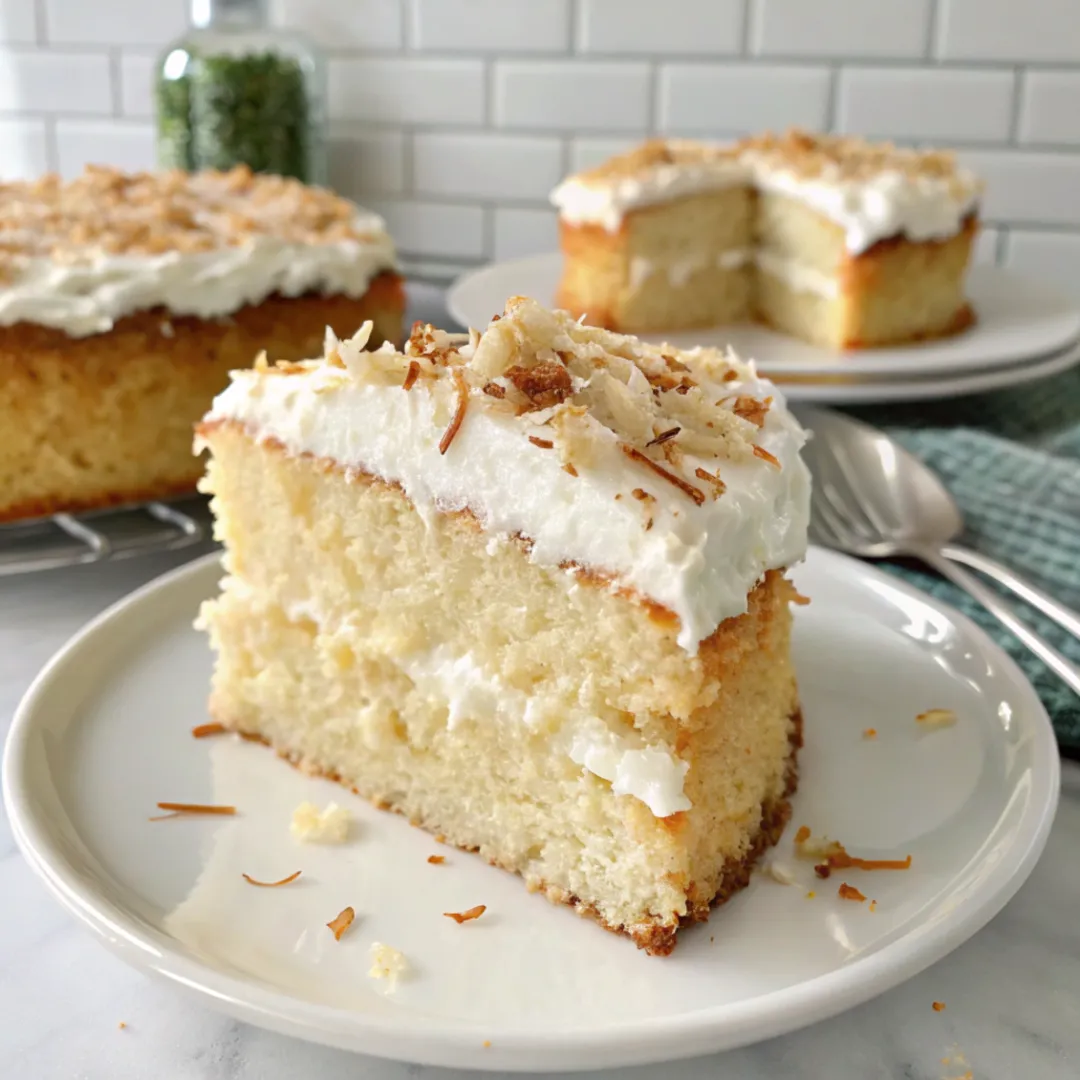
📝 Step-by-Step Coconut Cake Recipe You’ll Love
👩🍳 Preparing Your Ingredients for the Coconut Cake Recipe
Before you even preheat your oven, preparation is key. Mis-en-place (everything in its place) isn’t just for fancy chefs—it’s a game-changer for any coconut cake recipe.
Room Temperature Ingredients: Cold eggs and butter can ruin the texture. Let them sit out for 30 minutes before using.
Sift Dry Ingredients: This makes sure your flour, baking powder, and salt are well combined and lump-free.
Pre-Grease Pans: Line with parchment and spray with non-stick spray to avoid cake disasters.
Preheat Oven: Usually to 350°F (175°C), unless your specific recipe says otherwise.
Taking 10 extra minutes to prep makes the entire baking process smoother—and trust me, it shows in the final result of your coconut cake recipe. 🕒✨
